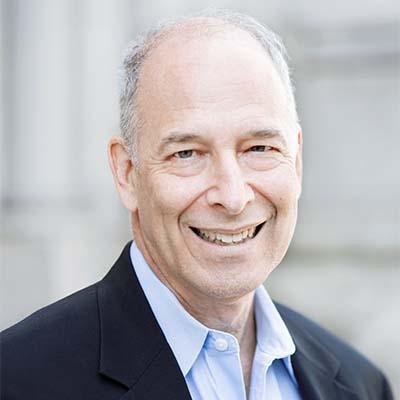The Whac-a-Mole Strategy Works (and Is Helping Shape the New Energy Economy)
Whac-a-Mole is an arcade game in which a mole pops up from a hole and must be hit in the head with a mallet. This sends it back down its hole. As soon as one mole is whacked, another pops up from a different hole and must be similarly dispatched. The moles keep coming back no matter how many are whacked or how quickly they are pounded into submission.
Well-meaning analysts have sometimes likened efforts by some climate activists to prevent development of specific projects, such as mines, export terminals and pipelines, to Whac-a-Mole. These critics seem to believe that even if one mole is pounded back into its hole, another will pop up in its place. In a recent piece on Vox.com, David Roberts asserted that “most climate wonks” hold this view, at least about the supply side of energy markets: “It will just be an endless game of Whac-a-mole; for each supply project shut down, the value of the remaining deposits will rise and new supply projects will come online.”
I think these wonks are wrong.
If climate change is to be seriously addressed, lots of strategies have to be pursued. Some will work, some won’t, and nobody knows which will be the most effective. As Yogi Berra, one of America’s greatest political analysts once said, “It’s tough to make predictions, especially about the future.”
I know from experience, however, that Whac-a-Mole works. And I suspect some of the wonks to whom Roberts alludes are uncomfortable with the fact that a focus on specific projects has taken place in the absence of any coherent over-arching federal or even global policy on climate and energy. They’d prefer climate activists put their energy into enacting big policy changes as opposed to engaging in guerilla-style Whac-a-Mole, even though history has shown that in this version of the game once a mole goes down it doesn’t come back.
CAMPAIGNING FOR POLICY CHANGE ISN’T A BAD STRATEGY, AND MANY OF OUR CLOSEST ALLIES HAVE THAT FOCUS. Efforts to reduce demand for energy, increase reliance on renewables or place a price on greenhouse-gas emissions are critically important. And, of course, we need bold federal and international climate policies.
But it’s not either/or, and—with a nod again to Yogi—you can observe a lot just by watching. Climate activists have performed amazingly well in recent years at preventing the development of projects even in the absence of substantial federal action. Of about 200 new domestic coal plants proposed during the Bush-Cheney era, hardly any got built. And the ones that were defeated didn’t pop up elsewhere. They stayed in their holes.
The Institute for Energy Economics and Financial Analysis and many of our brilliant and energetic allies pursued a spirited and successful Whac-a-Mole strategy that the Sierra Club’s Bruce Nilles named Leave No Coal Plant Behind. We succeeded because state, local and national climate activists, who started out with hardly any resources, worked hard to defeat proposed coal plants one by one. The Sierra Club and many other organizations have since made tremendous progress in retiring existing plants. Just a few years ago, coal fueled more than 50 percent of the country’s electricity system. Now it accounts for less than 40 percent and its share is falling fast.
There’s a similar story to be told around coal-export terminals. A few years ago, it looked like a slew of new terminals would be built in Oregon, Washington and British Columbia to support misguided coal-mining expansions in the Powder River Basin of Montana and Wyoming. Plans for five of the original nine terminals have since been canceled and the other four are on life support. Even along the Gulf Coast, which is hardly friendly territory to such campaigns, climate activists in Texas and Louisiana—through hard work and persistence—have managed to kill proposed coal-export terminals there.
WHAC-A-MOLE HAS WORKED ALSO TO STOP UNNECESSARY PROJECTS EVEN IN THE ABSENCE OF SENSIBLE FEDERAL POLICY. As I discussed in a previous commentary (“The Lasting Impact of the Anti-Keystone Campaign”), effective local opposition—Whac-a-Mole campaigns by another name—has now developed against oil and gas pipelines all over the country. Although some of the proposed fossil-fuel infrastructure at issue in those campaigns will be built, lots of it won’t. As a result, some of this country’s oil and gas will never find its way to consumers, and that’s a victory that has nothing to do with federal policy.
Not all recently abandoned fossil-fuel projects have been scuttled by Whac-a-Mole. Market forces drove their demise in many cases. So did new regulations. But it’s been on-the-ground opposition that has stymied many of these projects long enough for market forces and regulations to work their magic.
It would be nice to live in a world in which climate and energy policy is made by well-meaning people making decisions that serve the greater good. Such people do work in positions of influence, and many of them are trying very hard.
In rough-and-tumble reality, though, thousands of decisions affecting energy development and usage are made by thousands of people with wide-ranging motivations in thousands of venues. We should be glad that so many climate activists understand this on-the-ground arena and have acted accordingly—and to enormous effect.
Their Whac-a-Mole work is what makes me think we can still address the threat of climate change.
As Yogi also famously said, “It ain’t over ‘til it’s over.”
Larry Shapiro is IEEFA’s board president and associate director for program development at the Rockefeller Family Fund.















